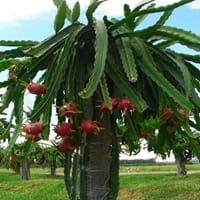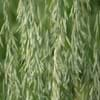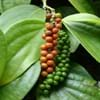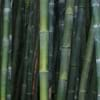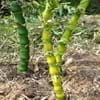Life Span
Annual
Perennial
Type
Grass
Cactus or Succulent
Origin
Hybrid origin, Europe
North America, Latin America and the Caribbean, Central America, South America
Types
Not Available
Not Available
Habitat
Farms
tropical environments, Tropical regions
USDA Hardiness Zone
Not Available
Not Available
AHS Heat Zone
10 - 1
Not Available
Sunset Zone
1a, 1b, 2a, 2b, 3a, 3b, 4, 5, 6, 7, 8, 9, 14, 15, 16, 17, 18, 19, 20, 21, 22, 23, 24
Not Available
Habit
Clump-Forming
Not Available
Minimum Height
Not Available
Minimum Width
Not Available
Flower Color
Green, Light Green
Not Available
Flower Color Modifier
Bicolor
Not Available
Fruit Color
Not Available
Red, Salmon
Leaf Color in Spring
Light Green, Gray Green
Not Available
Leaf Color in Summer
Light Green
Not Available
Leaf Color in Fall
Light Green, Yellow green, Gold
Not Available
Leaf Color in Winter
Not Available
Not Available
Leaf Shape
Linear
Lanceolate
Plant Season
Not Available
Not Available
Sunlight
Full Sun
Full Sun
Growth Rate
Fast
Not Available
Type of Soil
Loam
Loam, Sand
The pH of Soil
Neutral
Acidic, Neutral, Alkaline
Soil Drainage
Well drained
Well drained
Bloom Time
Late Spring, Early Summer
Not Available
Tolerances
Not Available
Deer resistant, Drought, Heat And Humidity, Salt, Shade areas, Wet Site
Where to Plant?
Ground
Container, Ground, Pot
How to Plant?
Seedlings
Semi-hardwood cuttings, Stem Cutting
Plant Maintenance
Medium
Medium
Watering Requirements
Requires a lot of watering, Requires watering in the growing season
Water slowly, and allow to dry completely between soakings
In Summer
Lots of watering
Lots of watering
In Spring
Moderate
Moderate
In Winter
Average Water
Less Watering
Soil pH
Neutral
Acidic, Neutral, Alkaline
Soil Type
Loam
Loam, Sand
Soil Drainage Capacity
Well drained
Well drained
Sun Exposure
Full Sun
Full Sun
Pruning
Remove damaged leaves, Remove dead branches, Remove dead leaves
Dispose of diseased portions, Remove damaged leaves, Remove dead branches, Remove dead leaves, Remove dead or diseased plant parts
Fertilizers
All-Purpose Liquid Fertilizer
15-30-15 liquid fertilizer, Fertilzer with low nitrogen content
Pests and Diseases
Red blotch
Bacterial Stem Rot, Birds, Brown Rot
Plant Tolerance
Drought
Deer resistant, Drought, Heat And Humidity, Salt, Shade areas, Wet Site
Flowers
Insignificant
Showy
Flower Petal Number
Single
Not Available
Showy Fruit
Yes
Not Available
Edible Fruit
Yes
Not Available
Foliage Texture
Fine
Bold
Foliage Sheen
Glossy
Not Available
Attracts
Not Available
Not Available, pollinators
Allergy
no allergic reactions
Not Available
Aesthetic Uses
Not Used For Aesthetic Purpose
Showy Purposes
Beauty Benefits
Not Available
Anti-ageing, Good for skin, Making cosmetics
Environmental Uses
Air purification
Food for animals
Medicinal Uses
Menstrual Disorders, osteoporosis, Urinary tract problems
anti-cancer, anti-inflammatory, Antitumor, Diabetes, Healing, Nutritive, Skin wounds
Part of Plant Used
Whole plant
Flowers, Fruits, Seeds
Other Uses
Culinary use, Used for pasture
Cosmetics, Food for animals, Used as a nutritious food item, Used for its medicinal properties
Used As Indoor Plant
No
Yes
Used As Outdoor Plant
Yes
Yes
Garden Design
Edible
Container, Houseplant, Rock Garden, Wall
Botanical Name
AVENA sativa
Hylocereus undatus
Common Name
Oat
Pitahaya, Dragon Fruit
In German
Haferpflanze
hylocereus
In French
Plantes d'avoine
hylocereus
In Spanish
planta de avena
hylocereus
In Greek
φυτό βρώμη
hylocereus
In Portuguese
aveia planta
hylocereus
In Polish
Owies roślin
Hylocereus
In Latin
Oat plant
Hylocereus
Phylum
Tracheophyta
Magnoliophyta
Class
Liliopsida
Magnoliopsida
Order
Poales
Caryophyllales
Clade
Angiosperms, Commelinids, Monocots
Angiosperms, Core eudicots, Eudicots
Tribe
Aveneae
Hylocereeae
Subfamily
Pooideae
Cactoideae
Number of Species
Not Available
Season and Care of Oat plant and Hylocereus
Season and care of Oat plant and Hylocereus is important to know. While considering everything about Oat plant and Hylocereus Care, growing season is an essential factor. Oat plant season is Not Available and Hylocereus season is Not Available. The type of soil for Oat plant is Loam and for Hylocereus is Loam, Sand while the PH of soil for Oat plant is Neutral and for Hylocereus is Acidic, Neutral, Alkaline.
Oat plant and Hylocereus Physical Information
Oat plant and Hylocereus physical information is very important for comparison. Oat plant height is 60.00 cm and width 10.20 cm whereas Hylocereus height is Not Available and width Not Available. The color specification of Oat plant and Hylocereus are as follows:
Oat plant flower color: Green, Light Green
Oat plant leaf color: Light Green and Gray Green
Hylocereus flower color: Not Available
- Hylocereus leaf color: Not Available
Care of Oat plant and Hylocereus
Care of Oat plant and Hylocereus include pruning, fertilizers, watering etc. Oat plant pruning is done Remove damaged leaves, Remove dead branches and Remove dead leaves and Hylocereus pruning is done Dispose of diseased portions, Remove damaged leaves, Remove dead branches, Remove dead leaves and Remove dead or diseased plant parts. In summer Oat plant needs Lots of watering and in winter, it needs Average Water. Whereas, in summer Hylocereus needs Lots of watering and in winter, it needs Less Watering.

